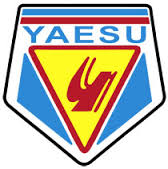My Yaesu Radios - The Solid State Models
In the 1970s, Yaesu began moving more and more toward sold state designs,
abandoning vacuum tubes. In the transitional phase, many models were
mixed or hybrid types that used vacuum tubes only in the output stage.
This was the design approach commonly used until less expensive high power
transistors became available by the late 1970s. After that date, all
models quickly switched to entirely semiconductor based designs like
the ones shown on this page. There were great advantages to the use of
transistors rather than vacuum tubes: they produced far less heat, had
reduced maintenance requirements, and needed no high voltages. Because
of this, most of the later models did not incorporate power supplies, but depended on an external source
of 12 Volts (actually 13.8) at a peak of about 25 Amperes. Such
radios could easily be operated from batteries in automobiles, greatly simplifying
mobile installations.
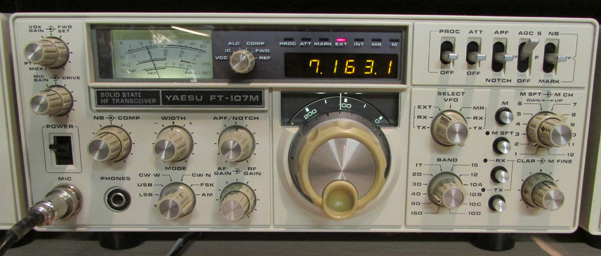
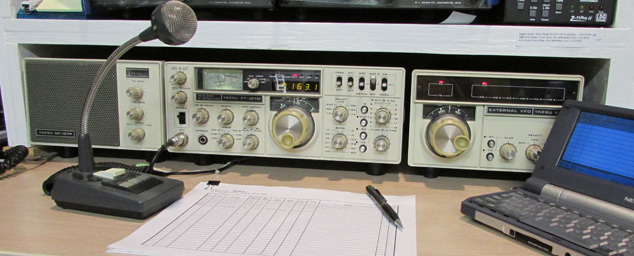
It seems to me that
the FT-107 culminated the design concept begun with the FT-101 series. This
radio physically resembles ones in that series and somewhat resembles the FT-901
and FT-102 models. The circuits are likewise somewhat similar also, except of course for
the output stages which in the FT-107 were entirely solid state. The FT-107 was
novel in another respect: it could be obtained in an off-white version, quite
unlike the dark cabinets used in most other radios. For those that preferred, a
dull gray version was also marketed. I purchased the radio shown here because I
found the light colored cabinet attractive. The radio acquired a certain cachet
because of the color, and I have seen it
referred to as the "white elephant."
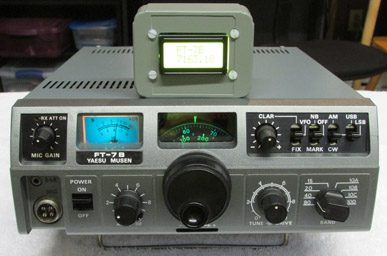
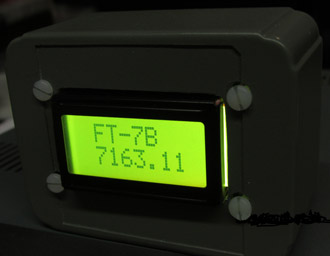
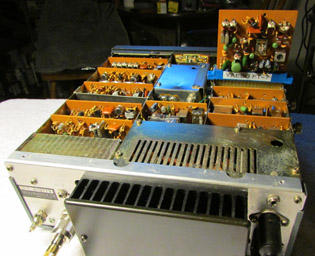
Another radio of
about the same era, was the FT-7 and the FT-7B. These transceivers were
intended from the beginning primarily as mobile radios, having
mounting attachment thumbscrews on the side of their cases. The FT-7 was capable
of 10 Watts output while the FT-7B could provide 50W and had a few
other minor refinements. This particular model was diminutive in
comparison to other equipment on the market at the time and can be
considered a forerunner of the IC-706 and TS-50 mobile/portable
radios of a decade later. These were simple radios having none of the
upscale features of the larger transceivers, yet they remain much loved
by their owners. The FT-7B I obtained was dirty but otherwise in fine
condition and despite the years, its alignment was nearly spot on. As
an addition, I built the digital display seen here
from a kit which I purchased on eBay.
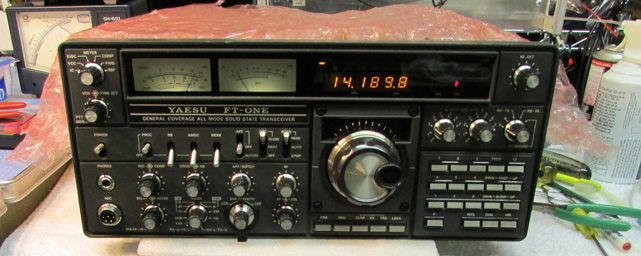
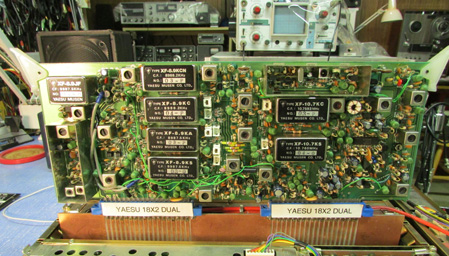
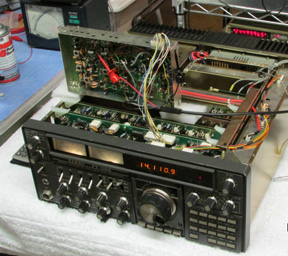
Perhaps the
Yaesu
transceiver that presented the biggest difficulty in restoration was
the FT-ONE. This radio was introduced in 1981 as the flagship model
in Yaesu's lineup. It remained on the market for five years but never
became a best seller because it was priced at just under $3,000, a
jaw-dropping figure at the time. It did offer for the first time some
nice features--tuning by frequency synthesis, general coverage from 150
kHz to 30 MHz, internal memories, a wide range of filters (seen above),
and bandpass width and adjustment controls. There is no band switch on
this radio; instead,
frequencies are selected by a combination of a keypad and a rotary
control used to select one megahertz band segments. Unfortunately,
this in the long term became its biggest drawback because keeping
oscillators in the synthesizer aligned and on frequency proved to be a
formidable task. Most owners of these radios have found that their
units
eventually had problems in frequency calibration and alignment. When I
received the unit seen here, it could not be aligned and would not
receive SSB properly. In the end, I had to modify the local
oscillator board seen above in order to achieve acceptable results.
Frequency readout accuracy was another problem and required some tricks
to remedy. In case you are interested, I may add another page of
explanation about how I resolved these issues. Check back later.
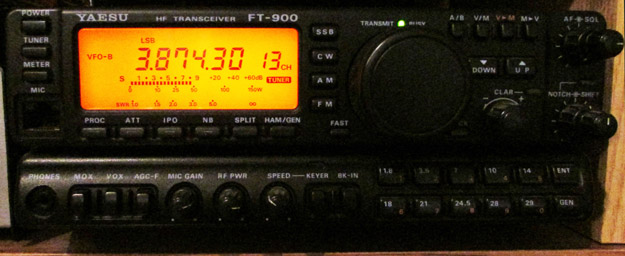
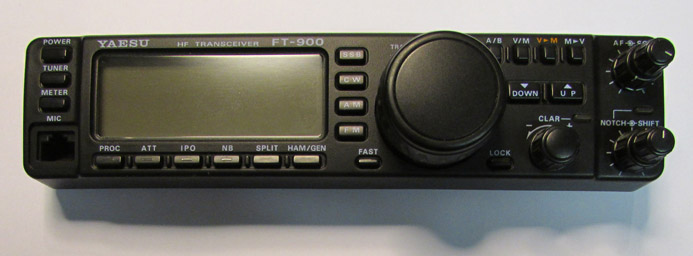
Another radio that I picked up for a
modest price at a hamfest about in the early 2000s was the FT-900CAT.
After
restoration, I liked the radio so much it became my daily driver for
several years. The letter C in the suffix refers to a Collins
mechanical filter. The transceiver had an internal antenna tuner,
which refers to the letters AT. The tuner is highly useful if you
usually
operate barefoot or with one of the older amplifiers. I was
originally attracted to this rig by the availability of these options
and by its small size. For a few years, it was the radio of choice for
DXpeditions because of these features. This model was
designed to be used as a base station or mobile. If used as mobile, it
was possible to detach the control panel from the main unit as shown
here, allowing the control panel to be placed near the driver while the
larger and heavier main body could be placed wherever convenient and
connected by means of a separation cable.
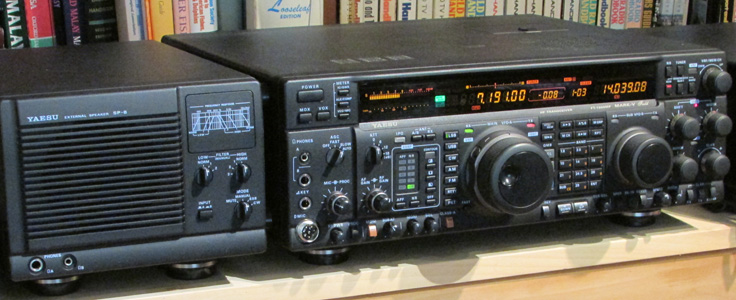
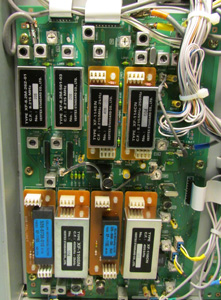
I acquired the
FT-1000dx Mark V field because I had
heard so much about the FT-1000 series; for a few years in the
early 2000s it seemed to be the preferred transceiver among top-flight
contest and DX operators. There were actually quite a few variants of
the FT-1000 model and there were wide differences among them. My
radio, the Mark V version, came at the end of the FT-1000 series
production. There were, however, two versions of the Mark V model, one
offering 200 Watts output but with an external power supply, and the
other the "field" model providing 100 Watts output and having an
internal power supply. These radios were extremely capable transceivers
incorporating every imaginable feature integrated in their design. Provisions
were made to accommodate many filter choices, and I was able to
complete my set of filters as seen above through eBay purchases.
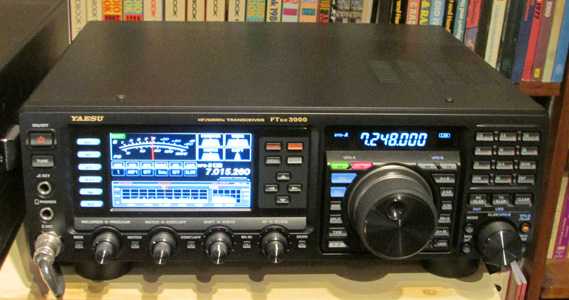
Recently, Yaesu adopted the use of spectrum displays on their radio user interfaces as seen in this FTdx3000. Displays like this had become a feature of high-end Icom transceivers years before and was used to simultaneously show signals across a wide portion of a band. I personally found spectrum displays important operating tools, though not everyone shared this opinion. I acquired this mid-range radio specifically because I liked its display, packed with not only a view of the spectrum but with much additional information about its operating parameters.
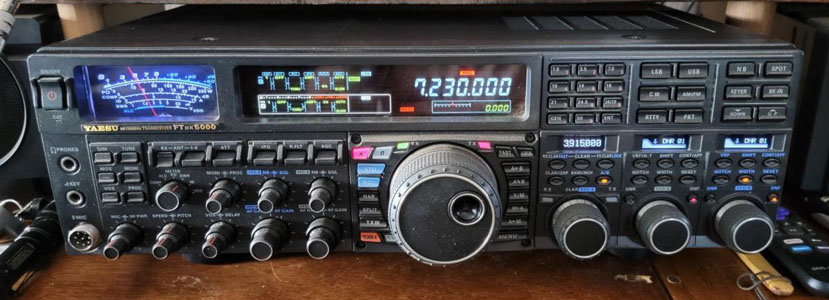
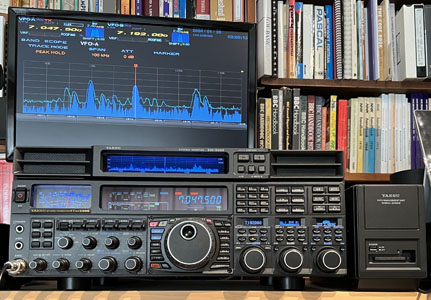
One of Yeasu's most advanced recent transceivers was the FTdx-5000. It was introduced in 2009 and remained in the company's lineup until 2021. Even today its specifications rate it among the top tier of amateur radio transceivers. It did not have an integrated spectrum display, but a companion monitor SM-5000 provided both an external speaker and the wide spectrum view as seen at the top of the radio shown here. Additionally, a Digital Management Unit, seen on the right, allowed a range of other displays on an external monitor, including a more detailed spectrum view, a greyline map, and other options. The FTdx-5000 utilizes an internal power supply that permits 200 Watts output. These were expensive radios and they remained beyond my budget until used prices eventually fell to an affordable level.
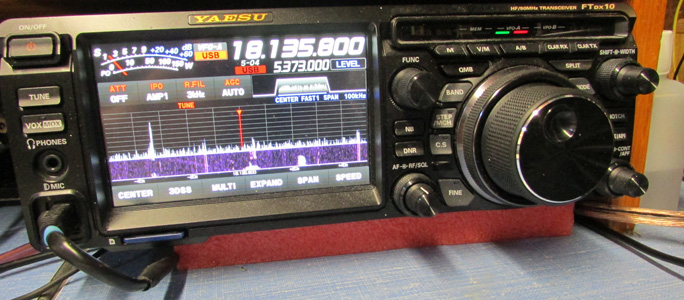
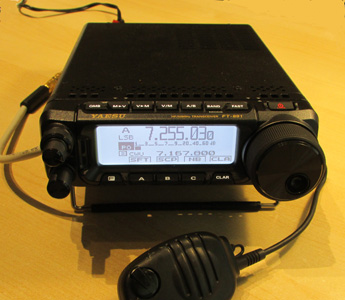
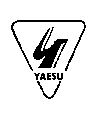
Back to my Yaesu vacuum tube page
